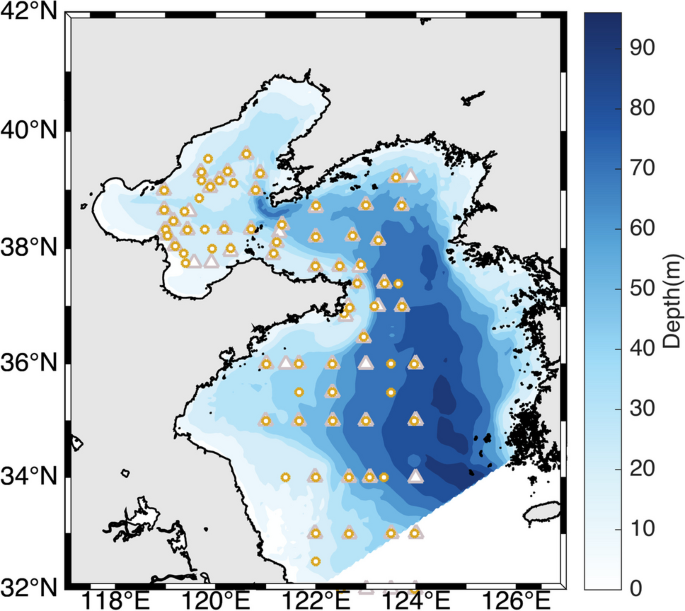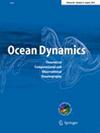渤海和黄海内部变率与斜压不稳定的关系
IF 1.9
3区 地球科学
Q2 OCEANOGRAPHY
引用次数: 0
摘要
初始条件略有不同的区域海洋综合模拟结果表明,渤海和黄海不仅形成了内部变率。本文分析了内部变率与斜压不稳定性之间的关系,(用Eady预测的理论扩散系数$${K}_{t}$$ K t表示;$${K}_{t}$$ K t越大,斜压不稳定程度越强)。在潮汐强迫作用下,Eady预测的理论扩散系数$${K}_{t}$$ K t与内部变率的空间相关系数为0.80。斜压不稳定和内部变率的时间演化趋势相似。基于这一证据,斜压不稳定性可能是内部变率的重要驱动因素。这个假设是通过另一个模拟集合来验证的,这个模拟集合与第一个集合相同,但这一次,潮汐是不活跃的。这种改变导致内部变率的增加,并与斜压不稳定性的加强相结合。此外,无论有无潮汐,夏季和冬季的斜压不稳定水平和内部变率变化都是一致的。我们的解释是,更强的斜压不稳定性导致更多的势能转化为动能,从而使非受迫性扰动增大。本文章由计算机程序翻译,如有差异,请以英文原文为准。

Link between the internal variability and the baroclinic instability in the Bohai and Yellow Sea
Abstract A regional ocean ensemble simulation with slightly different initial conditions demonstrates that internal variability is formed (not only) in the Bohai and Yellow Sea. In this paper, we analyze the relationship between the internal variability and the baroclinic instability, (represented by the Eady predicted theoretical diffusivity $${K}_{t}$$ K t ; the larger the $${K}_{t}$$ K t , the stronger the baroclinic instability level). In the ensemble, with tidal forcing, the spatial correlation between the Eady predicted theoretical diffusivity $${K}_{t}$$ K t and the internal variability amounts to 0.80. Also, the time evolution trends of baroclinic instability and internal variability are similar. Based on this evidence, baroclinic instability may be a significant driver for internal variability. This hypothesis is validated using an additional ensemble of simulations, which is identical to the first ensemble, but this time, the tides are inactivated. This modification leads to an increase in internal variability, combined with the strengthening of baroclinic instability. In addition, the baroclinic instability level and internal variability variation co-vary consistently when comparing summer and winter seasons, both with and without tides. Our interpretation is that a stronger baroclinic instability causes more potential energy to be transformed into kinetic energy, allowing the unforced disturbances to grow.
求助全文
通过发布文献求助,成功后即可免费获取论文全文。
去求助
来源期刊

Ocean Dynamics
地学-海洋学
CiteScore
5.40
自引率
0.00%
发文量
37
审稿时长
6-12 weeks
期刊介绍:
Ocean Dynamics is an international journal that aims to publish high-quality peer-reviewed articles in the following areas of research:
Theoretical oceanography (new theoretical concepts that further system understanding with a strong view to applicability for operational or monitoring purposes);
Computational oceanography (all aspects of ocean modeling and data analysis);
Observational oceanography (new techniques or systematic approaches in measuring oceanic variables, including all aspects of monitoring the state of the ocean);
Articles with an interdisciplinary character that encompass research in the fields of biological, chemical and physical oceanography are especially encouraged.
 求助内容:
求助内容: 应助结果提醒方式:
应助结果提醒方式:


